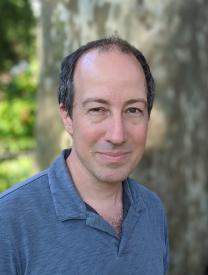Honors include:
- Alfred P. Sloan Foundation Research Fellowship (2010)
Ph.D., California Institute of Technology 2004
B.A., University of Chicago, 1995
My research focusses on some big questions in particle physics: What stabilizes the Higgs mass? What is dark matter and is the Higgs a portal to a dark matter? To do this, I work in large international collaborations which use cutting-edge particle colliders to search for new phenomena at the highest energies to access the smallest length scales. As a member of the ATLAS collaboration at the Large Hadron Collider (LHC), I played a key role in the 2012 discovery of the Higgs boson. In particular, I was a leading member of the Higgs to WW discover team. The discovery of the Higgs boson was the confirmation of a key ingredient of the standard model of particle physics, but there are many effects like dark matter, dark energy, and gravity that are not included in this theory. It is therefore expected that there are new particles that are either very weakly coupled to the particles we know or at higher energy than the particles we can produce. The ”low” observed Higgs boson mass is itself a puzzle. It requires a cancelation between two effects, one of which grows with the energy scale of these unknown new particles. We, therefore, expect those new particles to be close to the energies we are probing, otherwise, the cancelation becomes improbably finely tuned. If there are no such new particles, that may point to deeper questions about the universe we live in. Working on the ATLAS experiment at the larger hadron collider, I am currently engaged in direct searches for new particles in the context of a theory called super-symmetry (SUSY), which has a wide range of motivations including addressing this Higgs mass puzzle. The Higgs itself is also a potential portal to sectors that don’t couple much to the particles we know. I particularly focus on searches for the Higgs boson decaying invisibly which could happen in scenarios where dark matter is a particle with a mass less than half the Higgs mass. Finally, I am exploring the possibility that particles beyond the direct production reach of our experiments can have small indirect effects on how
the particles we know interact.
Phys 140/150: Principles of Physics I (Mechanics)
Phys 141/151: Principles of Physics II (Electricity and Magnetism)
Phys 170: Honors Principles of Physics I (Mechanics)
Phys 171: Honors Principles of Physics II (Electricity and Magnetism)
Phys 414: Laboratory in Modern Physics
1. G. Aad et al. [ATLAS Collaboration], “Observation of a new particle in the search for the Standard Model Higgs boson with the ATLAS detector at the LHC,” Phys. Lett. B 716, 1 (2012) [arXiv:1207.7214 [hep-ex]].
2. G. Aad et al. [ATLAS Collaboration], “Observation and measurement of Higgs boson decays to WW∗ with the ATLAS detector,” Phys. Rev. D 92, no. 1, 012006 (2015) [arXiv:1412.2641 [hep-ex]].
3. G. Aad et al. [ATLAS Collaboration], “Search for invisible Higgs-boson decays in events with vector-boson fusion signatures using 139 fb−¹ of proton- proton data recorded by the ATLAS experiment,” [arXiv:2202.07953 [hep- ex]].
4. G. Aad et al. [ATLAS Collaboration], “Searches for electroweak pro- duction of supersymmetric particles with compressed mass spectra in √s = 3 TeV pp collisions with the ATLAS detector,” Phys. Rev. D 101, no.5, 052005 (2020), [arXiv:1911.12606 [hep-ex]].
5. G. Aad et al. [ATLAS Collaboration], “Search for chargino-neutralino production with mass splittings near the electroweak scale in three-lepton final states in √s=13TeV pp collisions with the ATLAS detector,” Phys. Rev. D 101, no.7, 072001 (2020), [arXiv:1912.08479 [hep-ex]].
6. M. Aaboud et al. [ATLAS Collaboration], “Search for invisible Higgs boson decays in vector boson fusion at √s = 13 TeV with the ATLAS detector,” Phys. Lett. B 793, 499-519 (2019), [arXiv:1809.06682 [hep-ex]].
7. M. Aaboud et al. [ATLAS Collaboration], “Probing the quantum in- terference between singly and doubly resonant top-quark production in pp collisions at √s = 13 TeV with the ATLAS detector,” Phys. Rev. Lett. 121, no.15, 152002 (2018), [arXiv:1806.04667 [hep-ex]].
8. M. Aaboud et al. [ATLAS Collaboration], “Search for electroweak pro- duction of supersymmetric particles in final states with two or three leptons at √s = 13 TeV with the ATLAS detector,” Eur. Phys. J. C 78, no. 12, 995 (2018), [arXiv:1803.02762 [hep-ex]].
9. M. Aaboud et al. [ATLAS Collaboration], “Search for top-squark pair production in final states with one lepton, jets, and missing transverse momentum using 36 fb−¹ of √s = 13 TeV pp collision data with the ATLAS detector,” JHEP 1806, 108 (2018), [arXiv:1711.11520 [hep-ex]].
10. G. Aad et al. [ATLAS Collaboration], “Search for Invisible Decays of a Higgs Boson Produced in Association with a Z Boson in ATLAS,” Phys. Rev. Lett. 112, 201802 (2014) [arXiv:1402.3244 [hep-ex]].
11. T. Aaltonen et al. [CDF Collaboration], “First Measurement of ZZ Production in ppbar Collisions at sqrt(s)=1.96 TeV,” Phys. Rev. Lett. 100, 201801 (2008), [arXiv:hep-ex/0801.4806 ].
12. A. Abulencia et al. [CDF Collaboration], “Observation of WZ Production,” Phys. Rev. Lett. 98, 161801 (2007), [arXiv:hep-ex/0702027].

